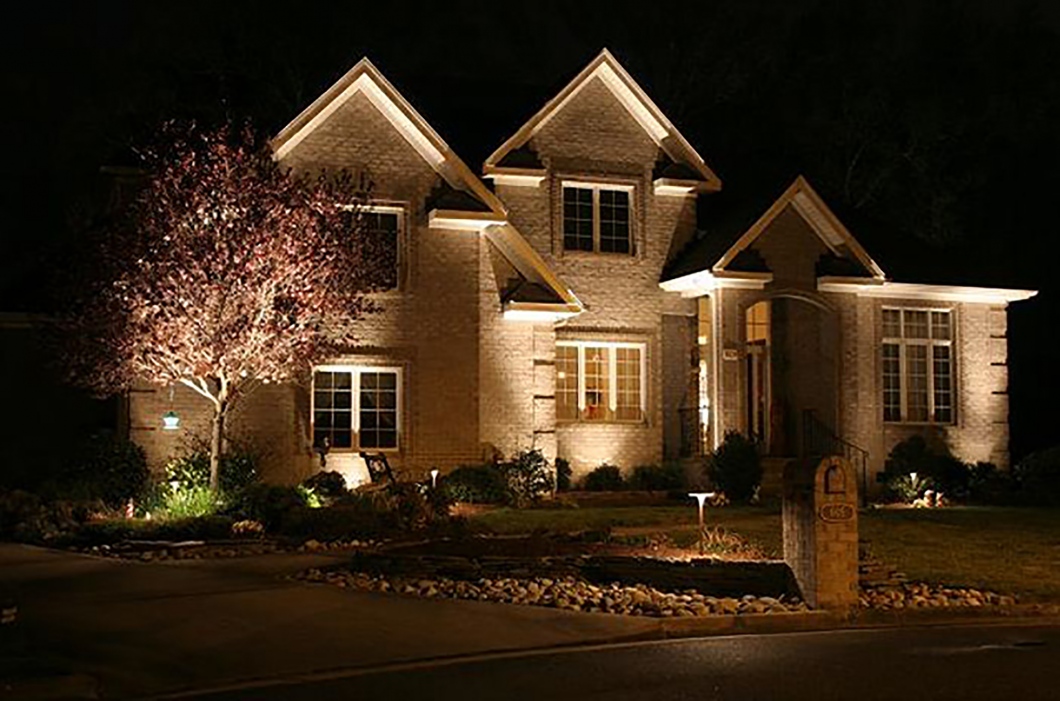When it comes to home decorating, it’s hardly uncommon for homeowners up and down the country to spend a small fortune on designer interior lights to revamp their interior living spaces. The same however cannot be said for exterior lighting as when it comes to the lights the majority select for their own gardens and home exteriors, it’s usually a case of choosing whatever works with little to no real thought.
This is of course something of a shame – especially in a country such as this where outdoor living is such a universal passion. The simple fact of the matter is that just as is the case with home interiors, the right exterior lighting can make the most incredible difference to any garden or external living space for the pleasure of all who use it. Not only this, but high quality exterior lighting also has the very real potential to increase the overall value of the property – thus proving the kind of rare investment that’s almost guaranteed to pay dividends.
But that of course assuming you actually get it right in the first place – something that isn’t always as easy to do as it may appear. So in the interests of getting the very most out of your exterior living spaces throughout the year, here’s a quick rundown of five of the most common exterior lighting mistakes of all which can and should be avoided:
1 – Lamp and Lantern Proportions
If you are considering investing in wall lamps or lanterns to be mounted around any of your doors or entrances outside, it’s important to ensure you select the appropriate size products. It’s all about keeping tabs on proportions and ensuring that you neither clutter and crowd your entrances with overly large lamps or install quite pitifully tiny examples the likes of which serve no practical purpose whatsoever. Think about the size of the entrances you are looking to light along with what else is in the vicinity to help avoid making this mistake.
2 – Going OTT With the Lighting
Don’t fall into the trap of assuming that when it comes to exterior lighting, there’s no such thing as too much…there very much is! The whole idea of illuminating your exterior living spaces is to bring a sense of practicality and beauty to them during hours of darkness. Or to put it another way, what you are most certainly not looking to do is to light the place up like a floodlit football pitch at all hours of day and night. It’s technically quite easy to get carried away once you get started, which is why it’s better to work to a predetermined plan rather than making things up as you go along.
3 – Skipping Control Systems
If you decide to save a few extra pennies by skipping the automated control systems such as timers and motion detectors, it won’t be long before you regret doing so. There will be so many occasions when and where you will forget to turn the lights off that the additional money you’ll waste on electricity would have no doubt easily covered the costs of a decent control system. And to that effect, you should also consider control systems to independently control various areas or zones of your exterior lighting systems if they are quite large-scale or complex.
4 – Quality Quarrels
Something else you are almost guaranteed to regret is opting for any given exterior lights or lighting systems simply on the back of them being the cheapest on the market. Of course there’s much to be said for paying the lowest possible price for any given decorative touch, but it really doesn’t make sense to do so if and when you will most likely be required to repair or replace it over and over again. It’s worth bearing in mind that what you are looking at here is a long-term investment in your enjoyment of the home and its overall value – it therefore pays to avoid being overly frugal.
5 – Not Considering Colours
Last but not least, it’s also extremely common for those picking up exterior home lighting for the first time to completely overlook the fact that there are literally endless different colours, tones and effects available. You need to think carefully about both what’s already in the garden and the effect you’d like to go for as there are endless ways and means of creating literally any effect imaginable. If in any doubt, speak to an independent expert for advice.

